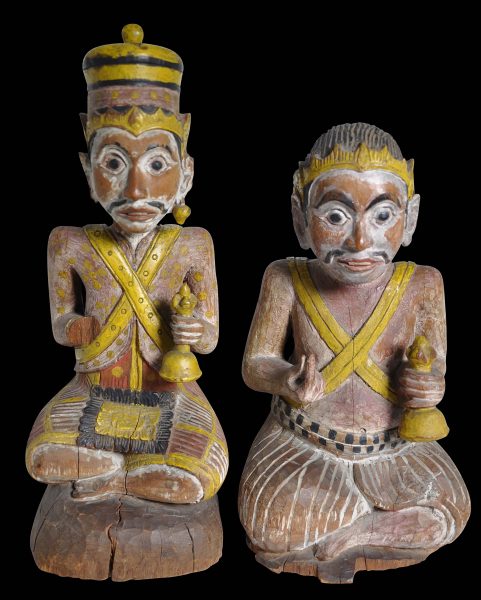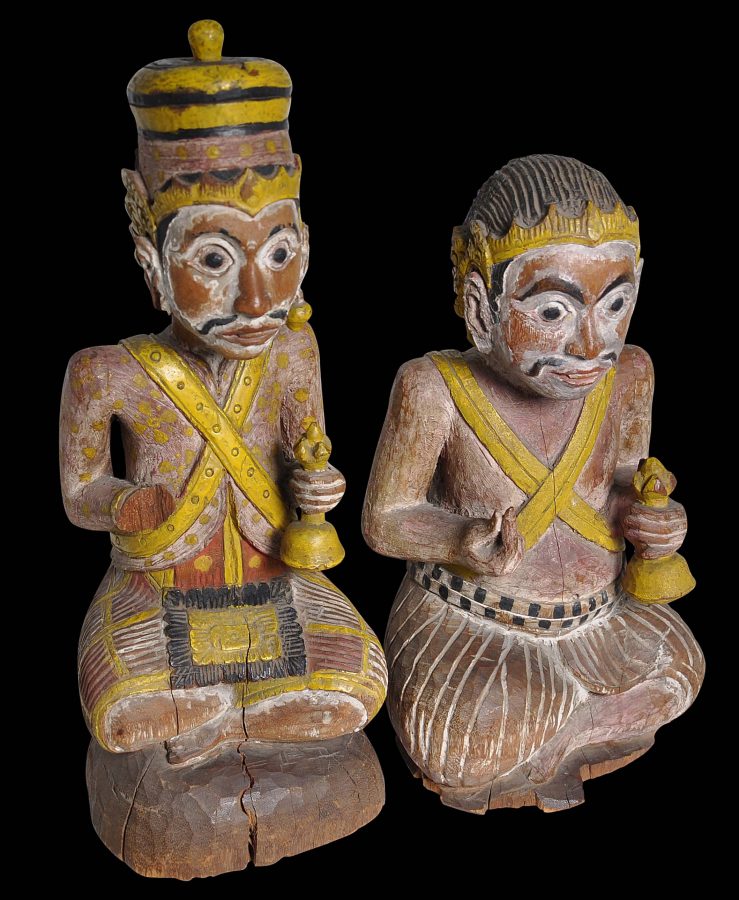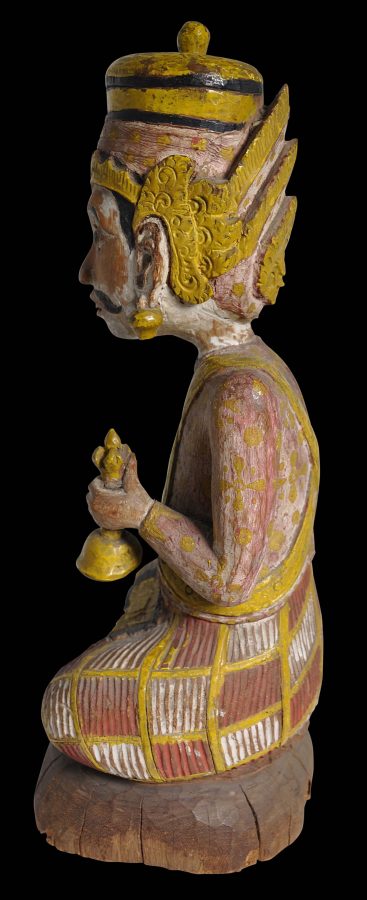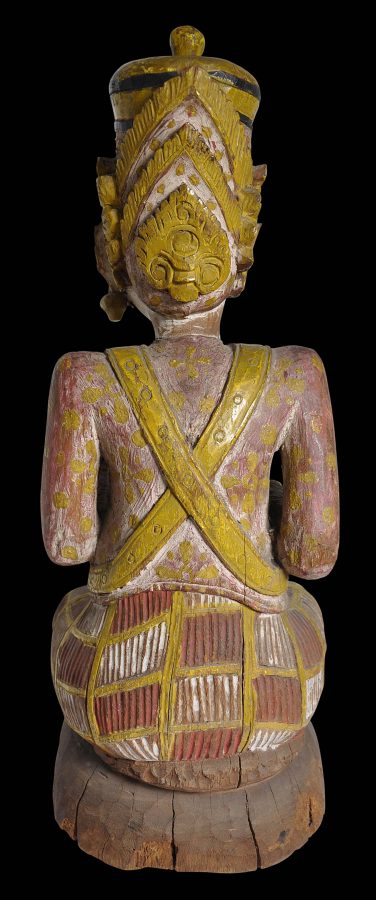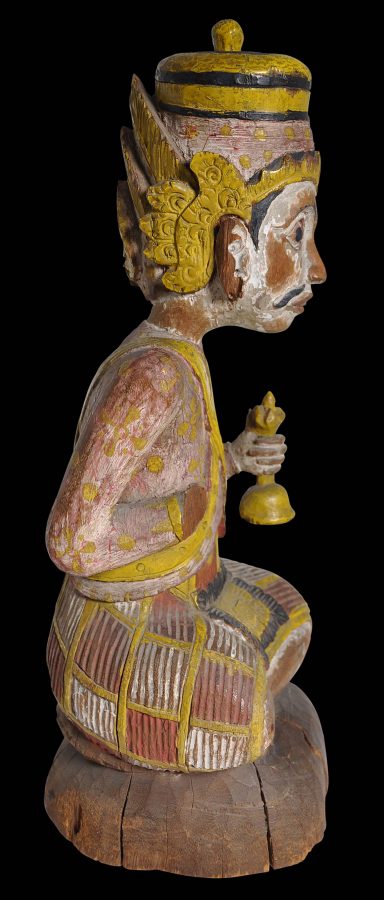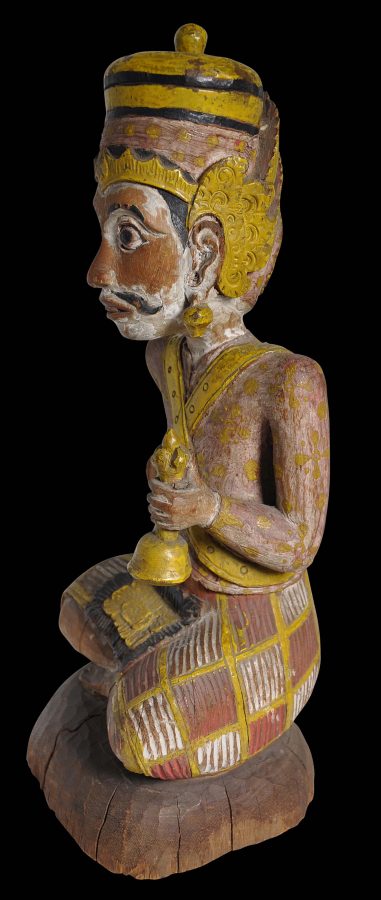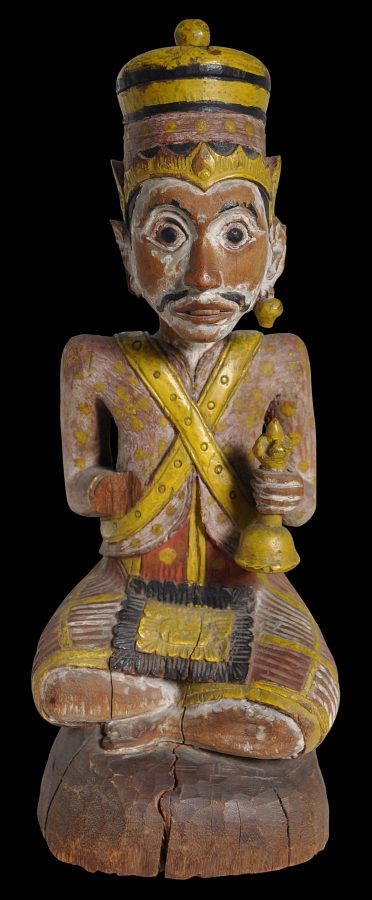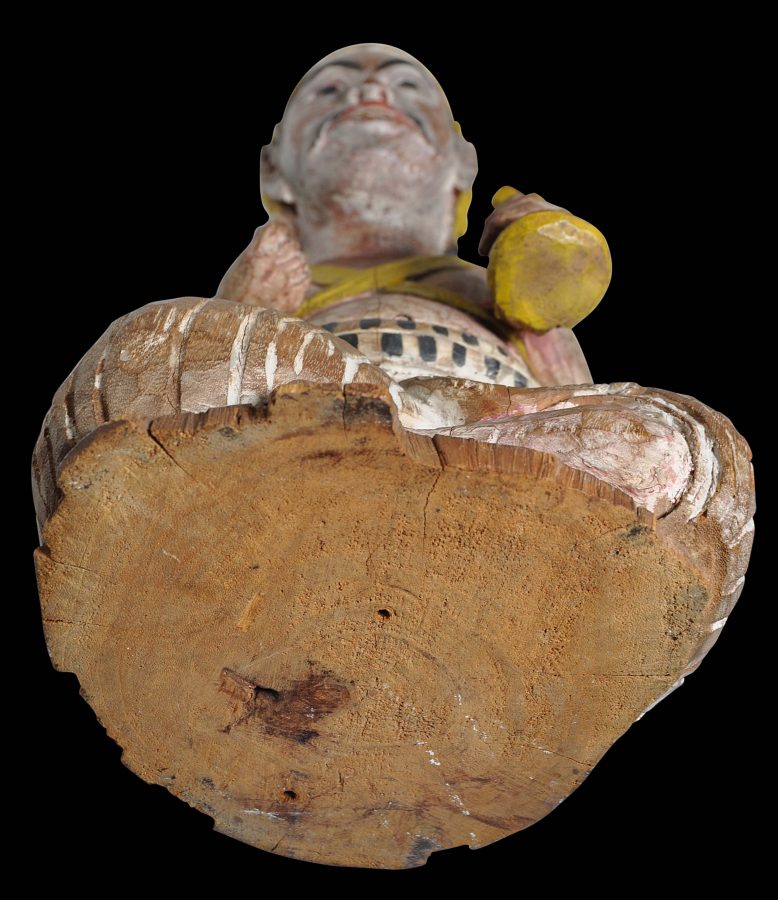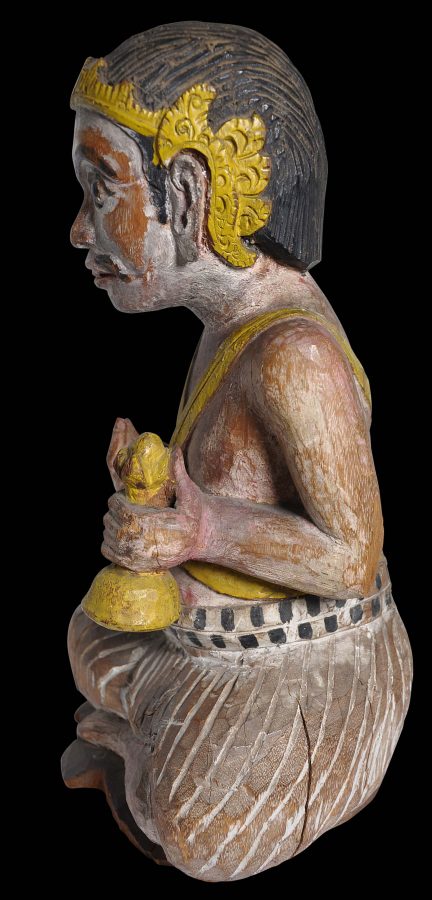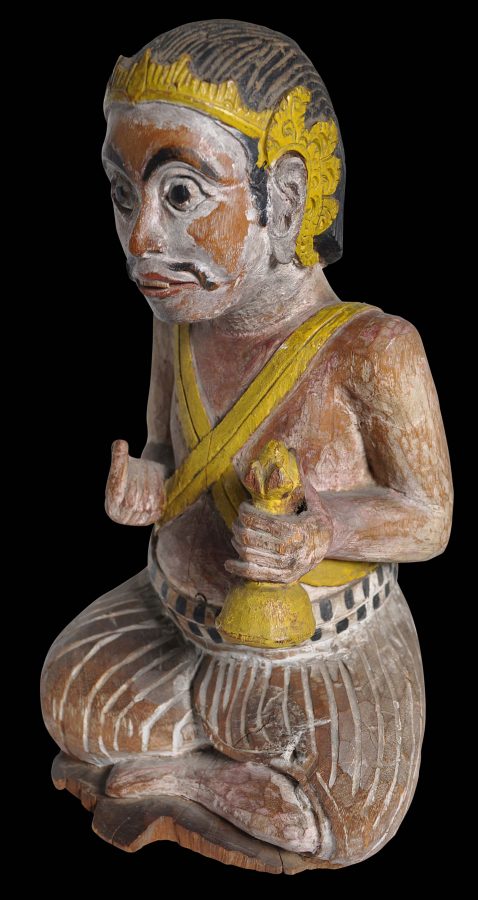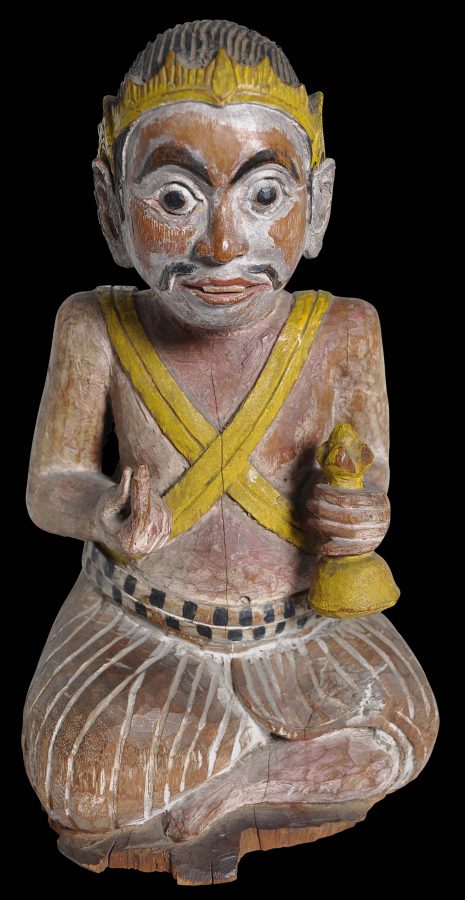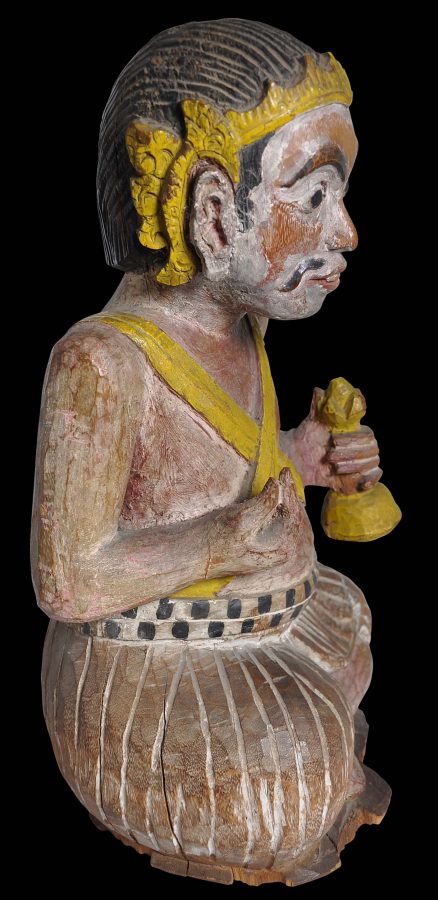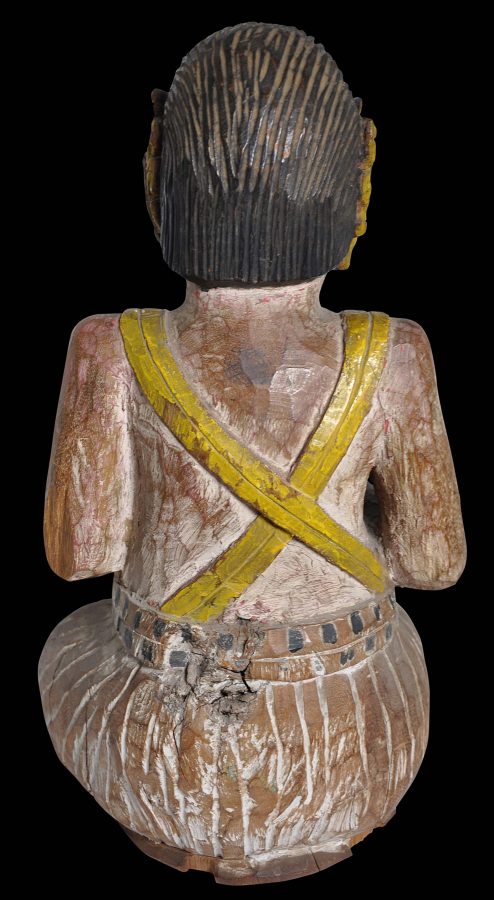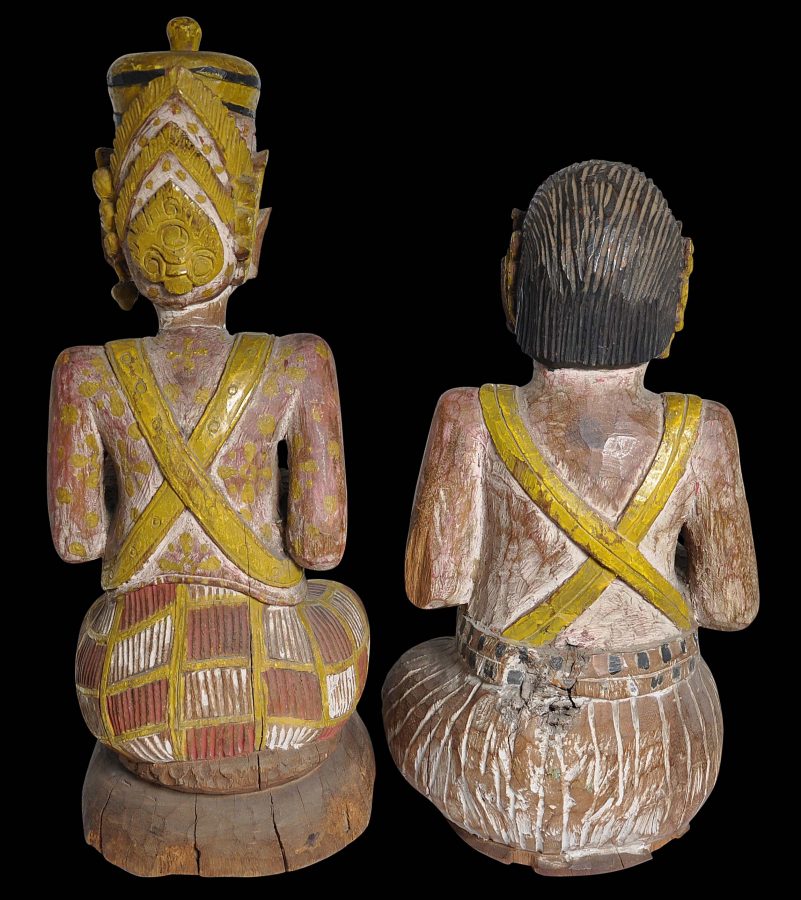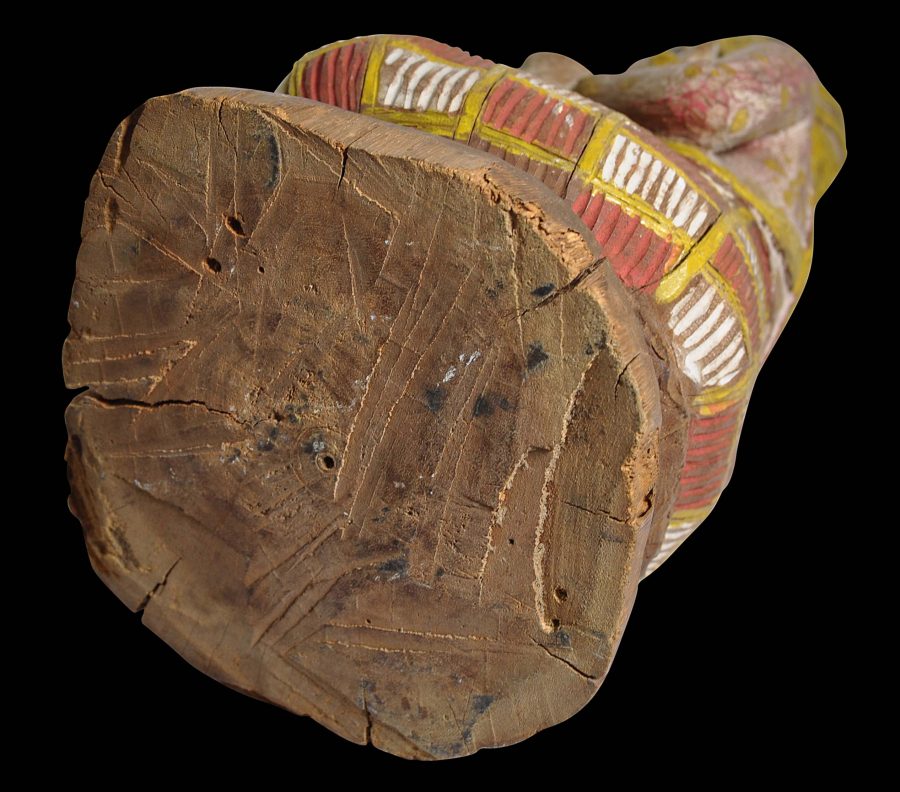This striking pair of statues carved entirely from wood is from north Bali and shows a Balinese Hindu priest and his assistant sitting cross legged and performing prayers. Painted in black, yellow, white and red polychrome, they have been carved with particularly pleasing, expressive faces.
The priest wears an elaborate, tall priest’s crown, a waist jacket, a checkered sarong, and an earring in one ear (the other ear probably had an earing too but this been lost). He holds a ritual bell (ghanta) in his left hand (his right hand has been lost).
His assistant wears a diadem, a sarong with a black and white checkered belt, and he too holds a ritual bell in his left hand.
Both figures wear yellow, ritual cords crossed over their chests.
What were such images used for in the nineteenth and early twentieth centuries? Their precise function is not known. Most wooden statues were used as architectural elements but that is unlikely to have been the case with this pair, which are too fine, and clearly were designed as stand-alone pieces. Reichle (2010, p. 241) comments that such images were likely designed as decorative items to adorn royal palaces and similar important administrative buildings.
The pair were acquired in the UK and most likely have been in the UK for many decades. The patina of the wood, softness of the ochres used to colour the statues, and the age-related splits and losses suggest that the pair has considerable age. A nineteenth century attribution seems possible. Comparatively early pairs of wooden statues are also quite rare, the pairs typically being broken up over time.
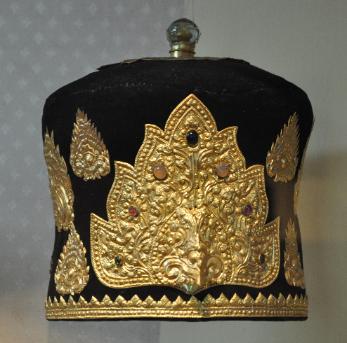
A Balinese Hindu priest’s crown or headdress, photographed at the Bali Museum, Denpasar, December 2012.
References
Ramseyer, U., The Art and Culture of Bali, Oxford University Press, 1977.
Reichle, N. (ed.), Bali: Art, Ritual & Performance, Asian Art Museum, 2010.


